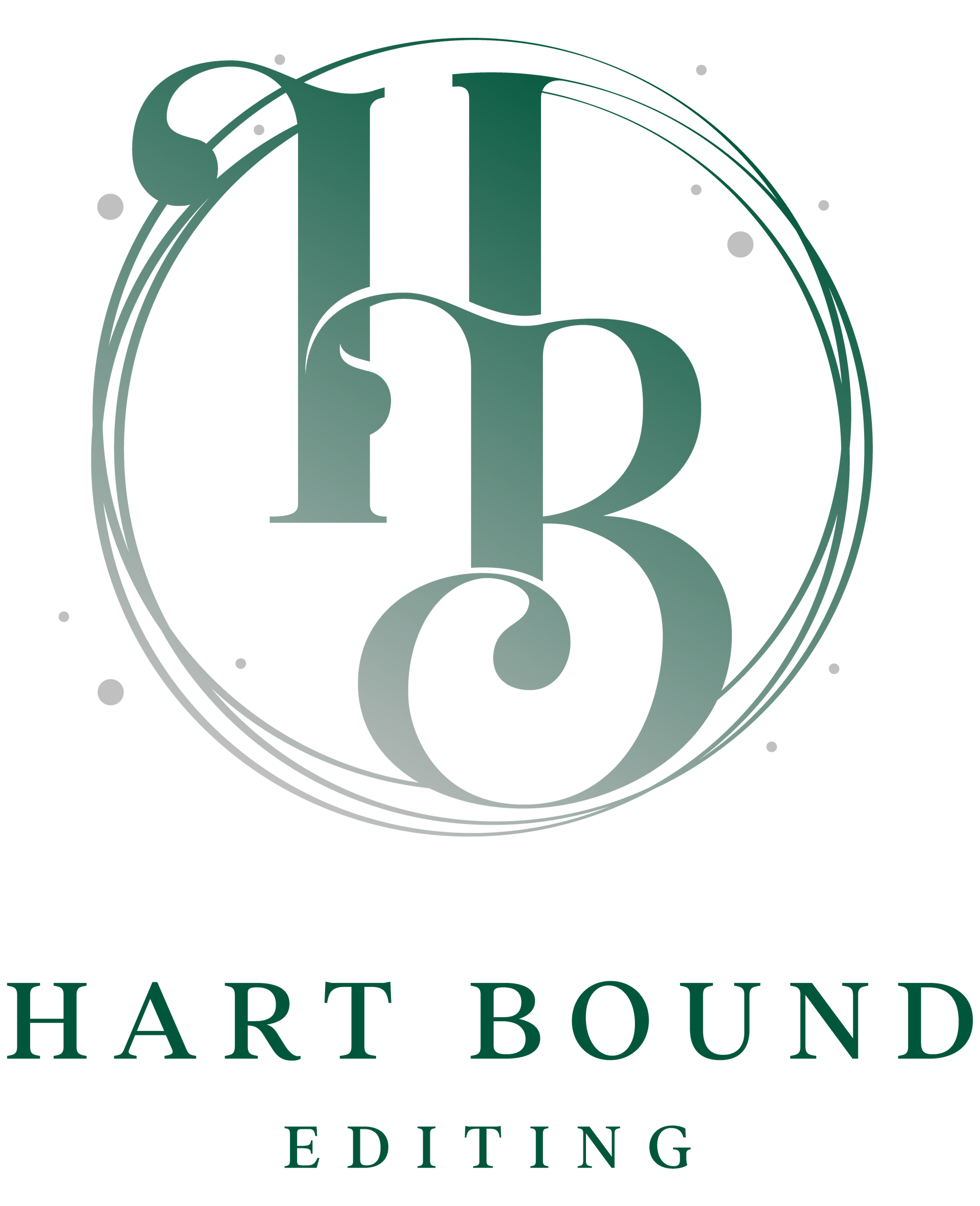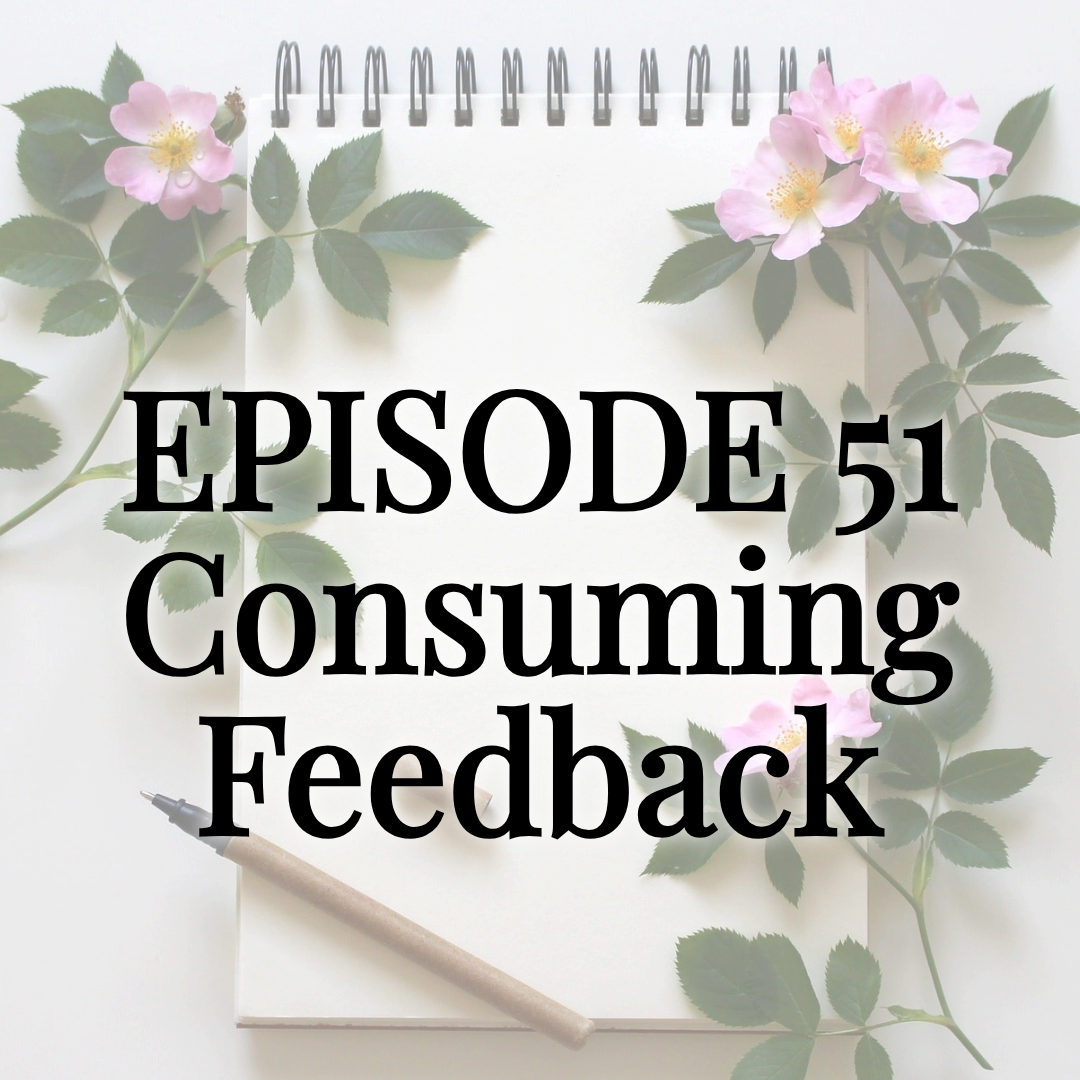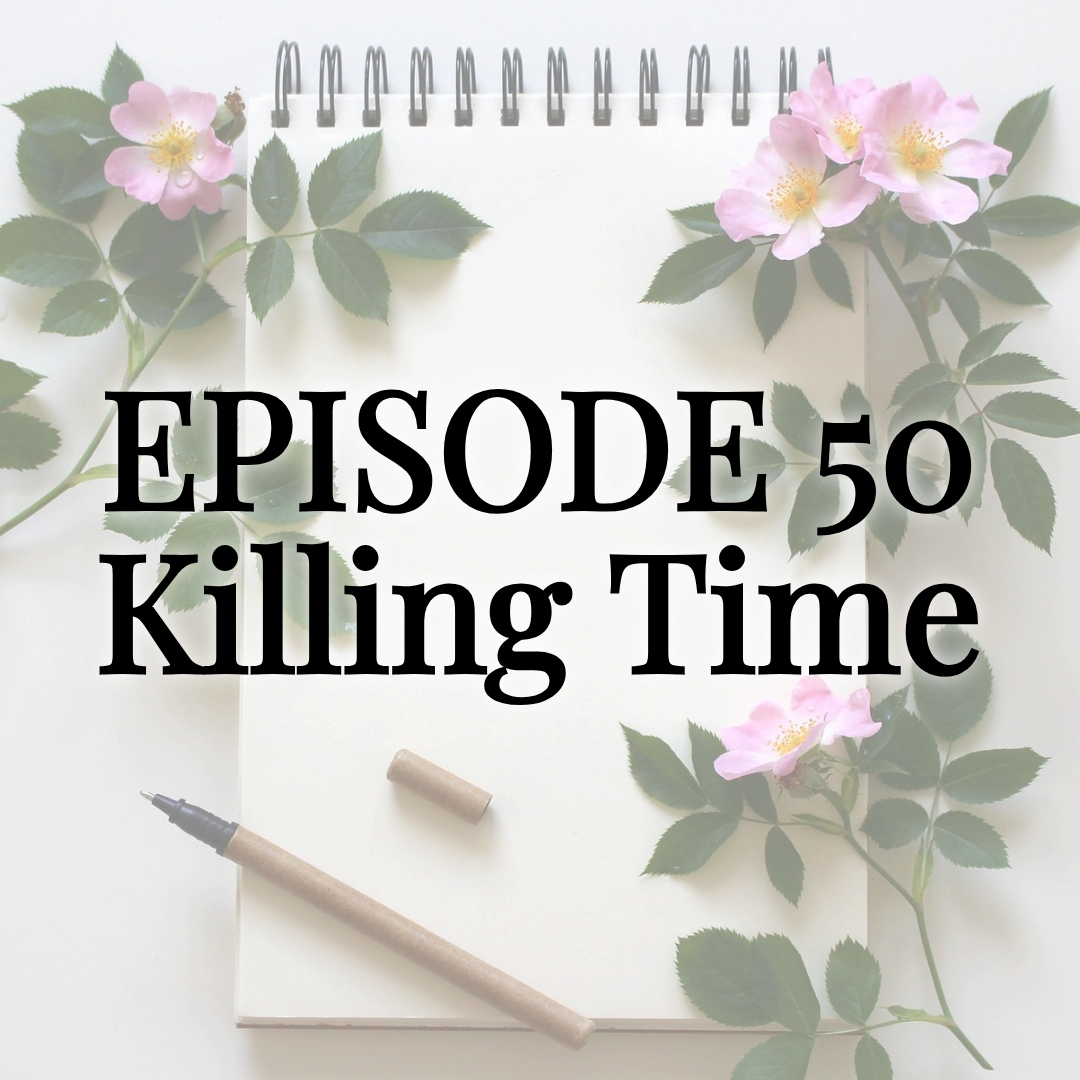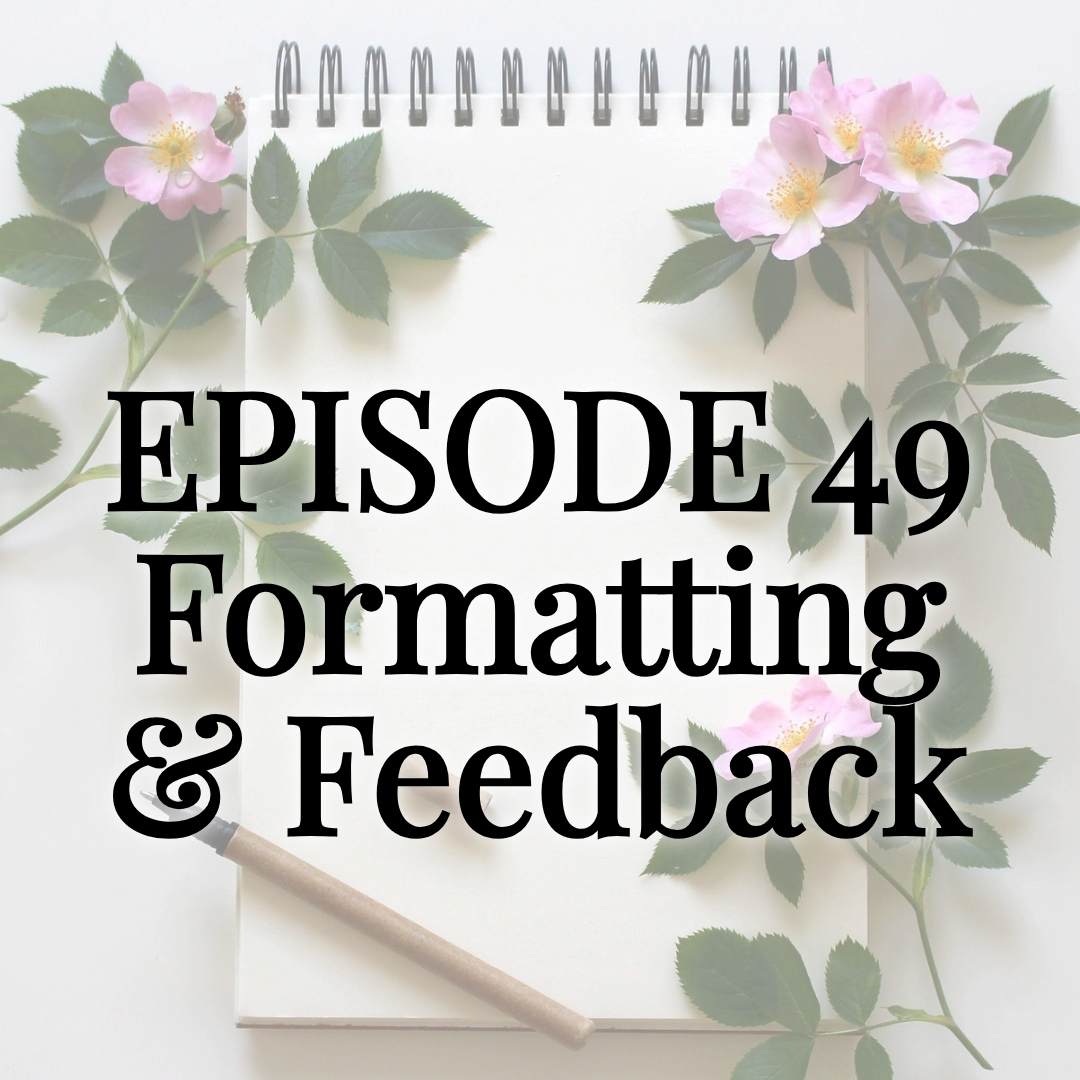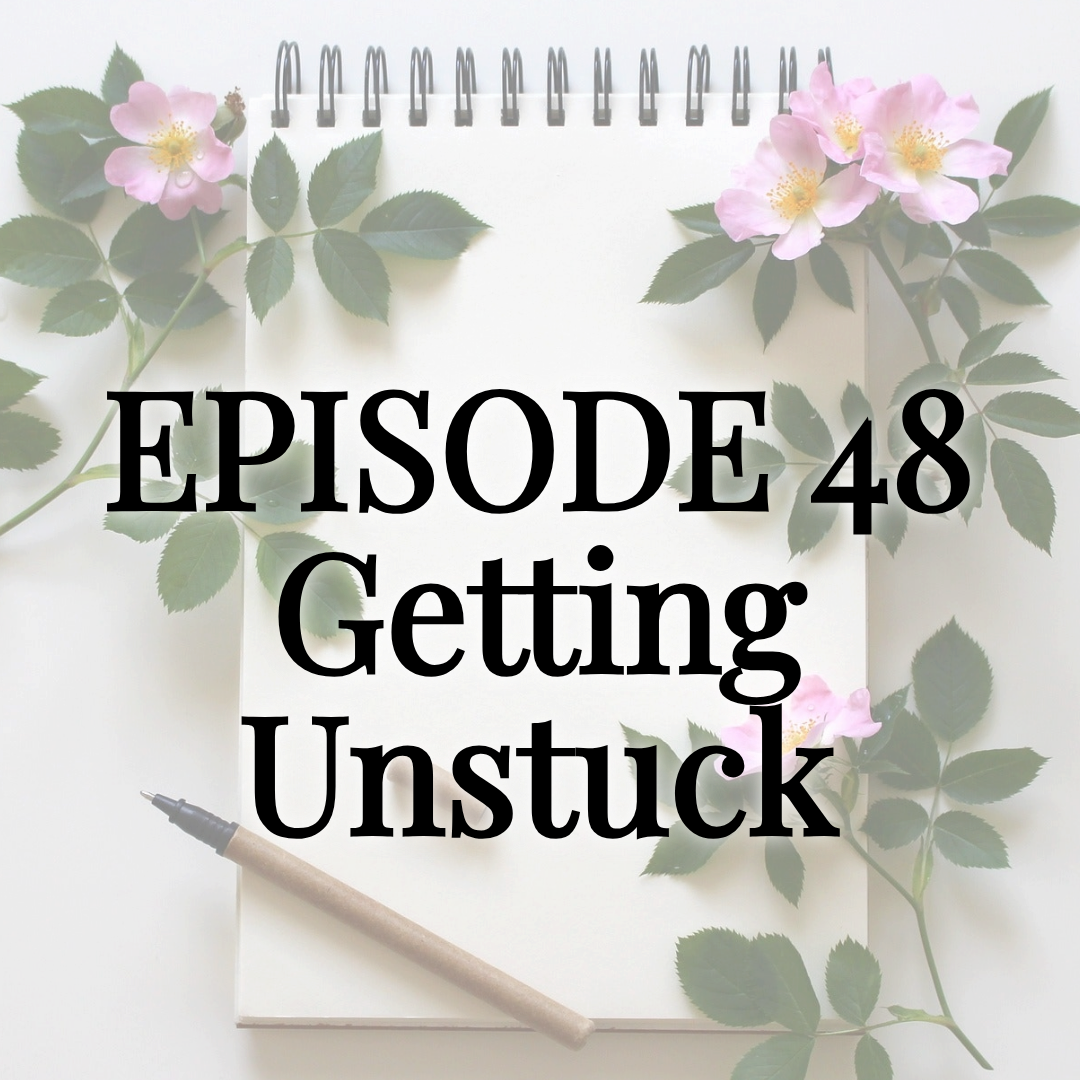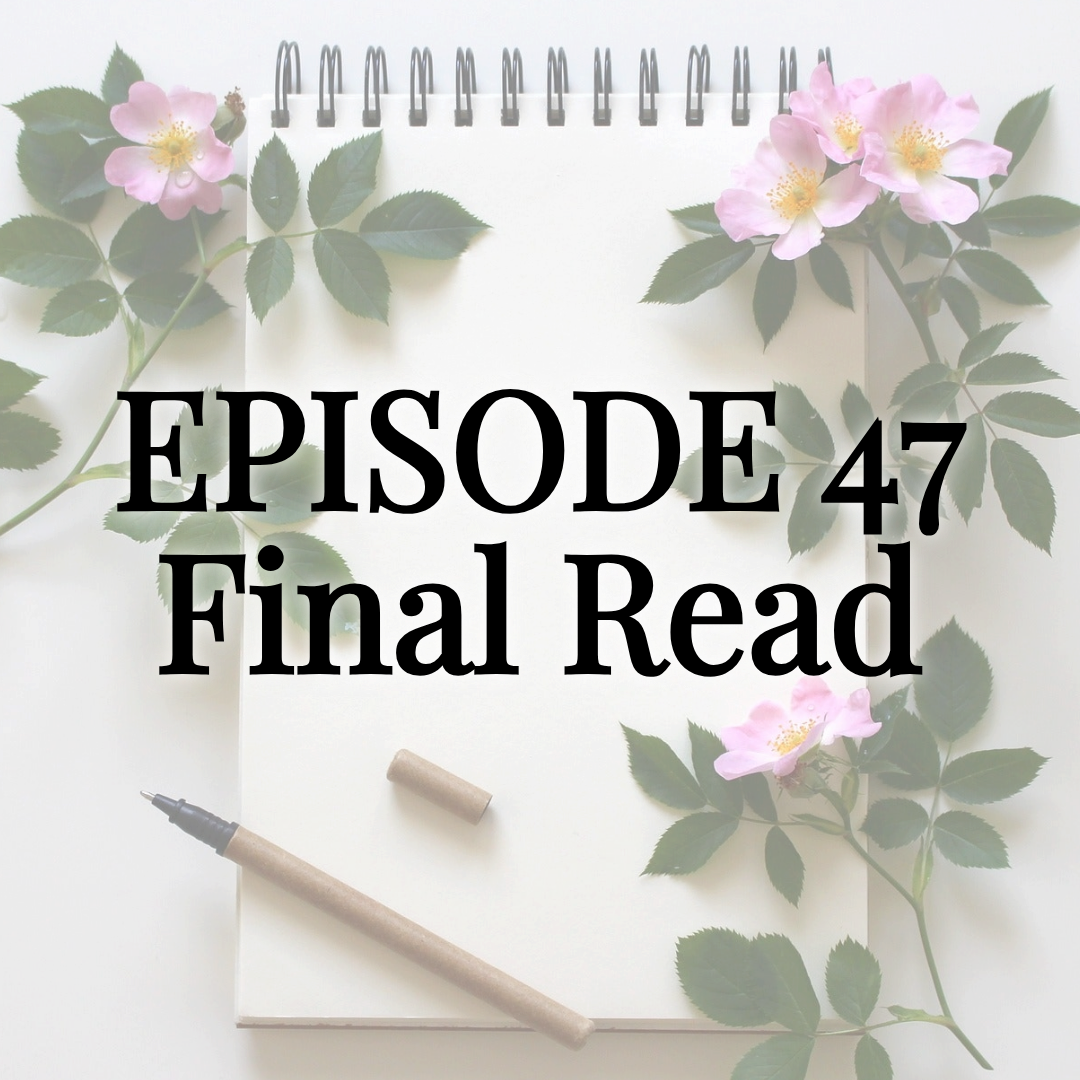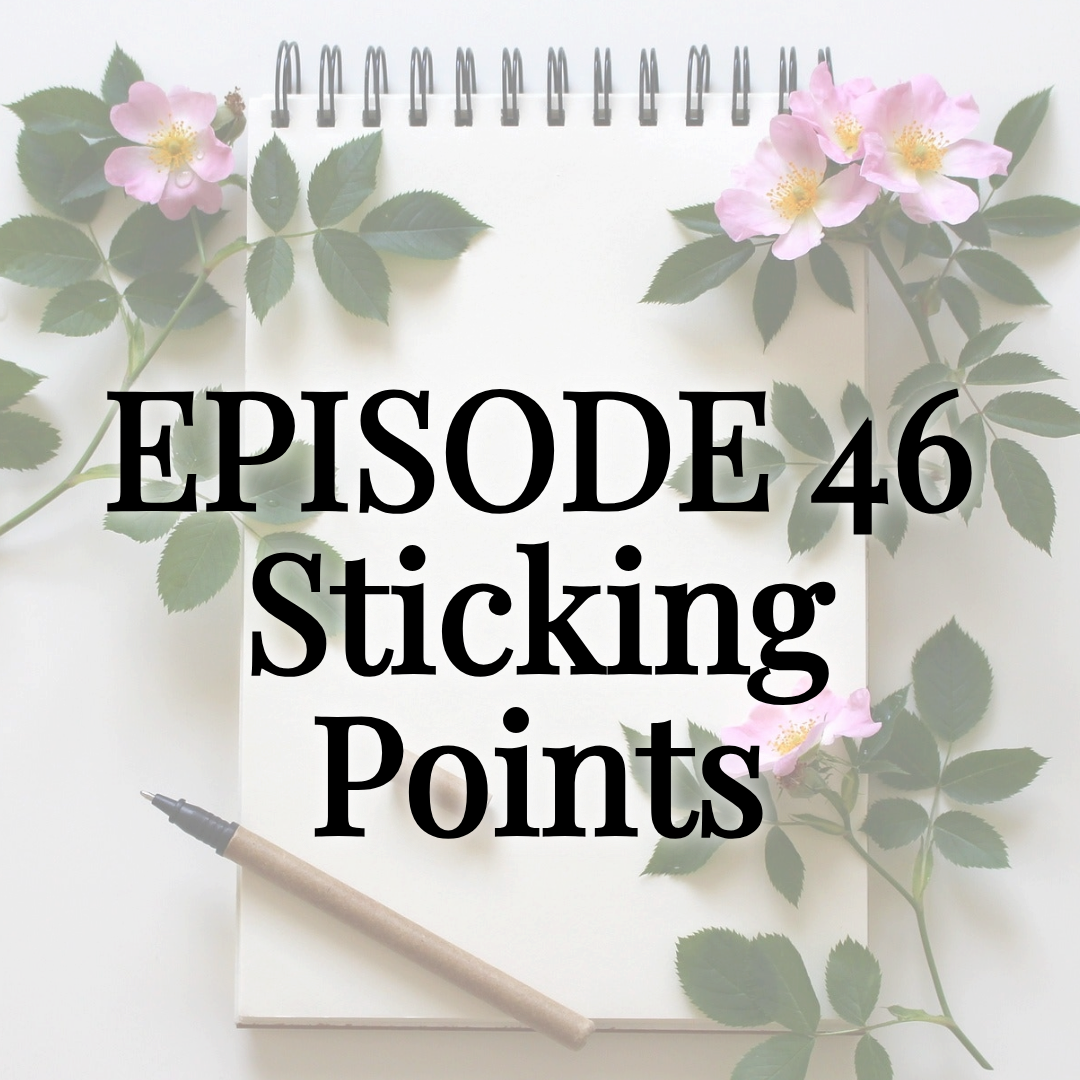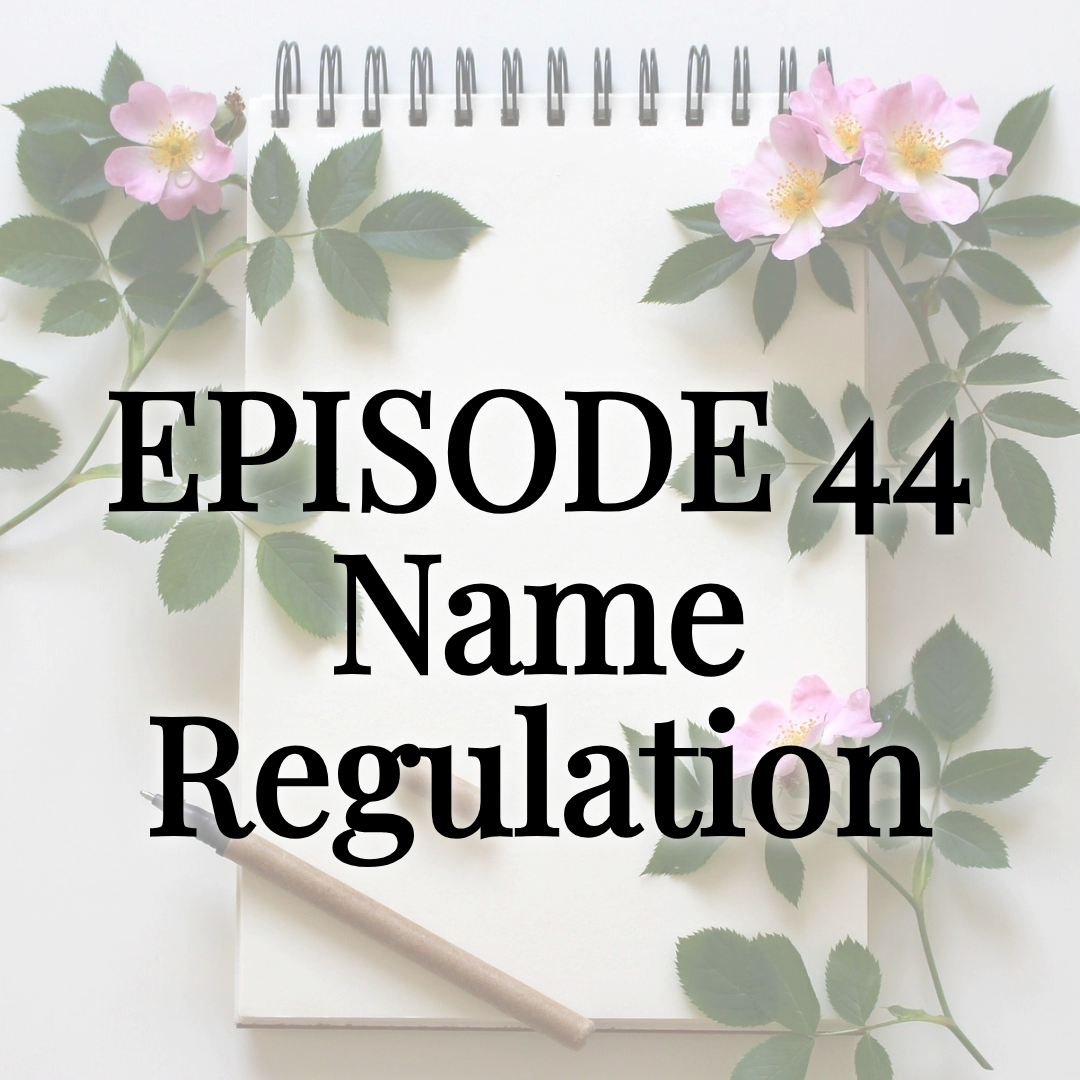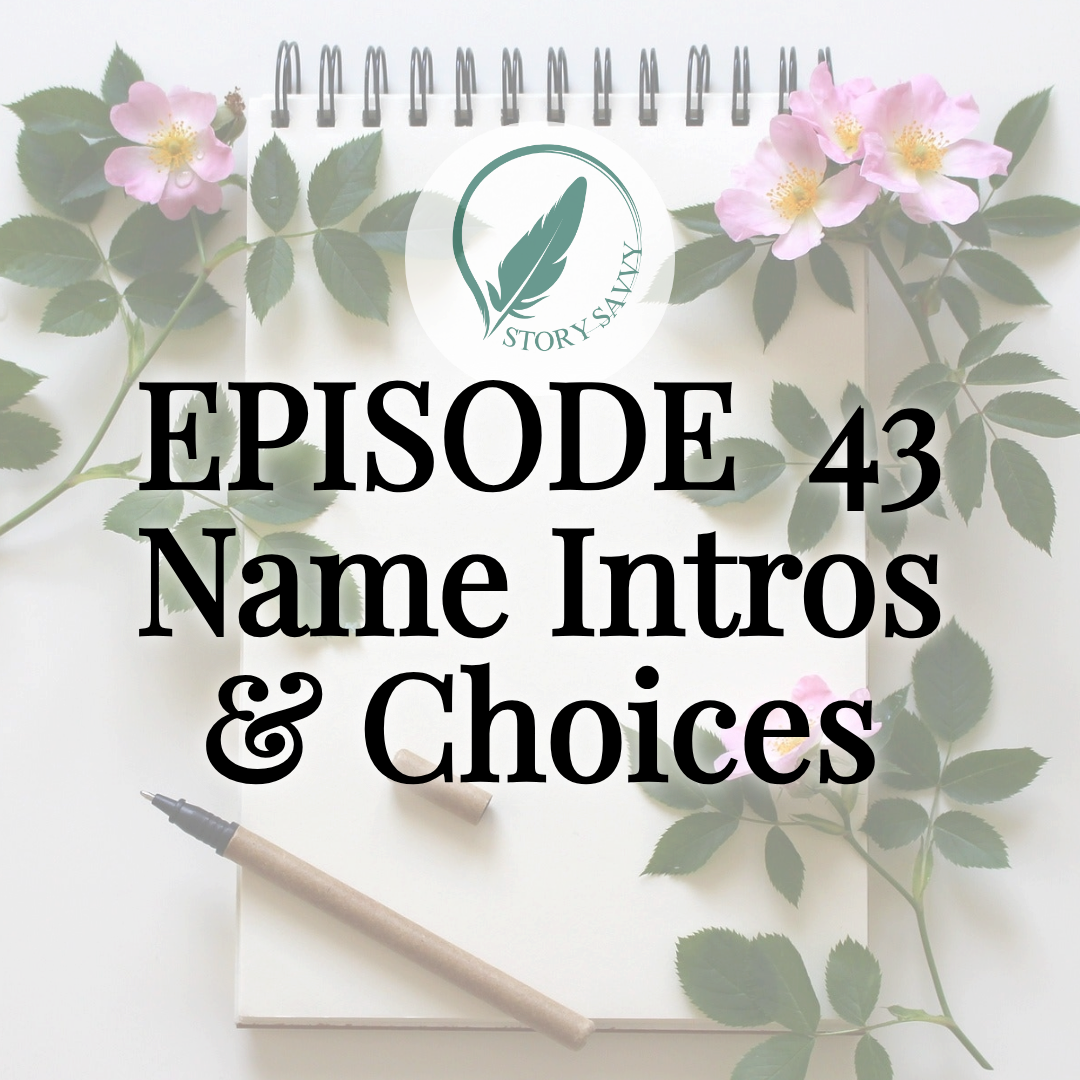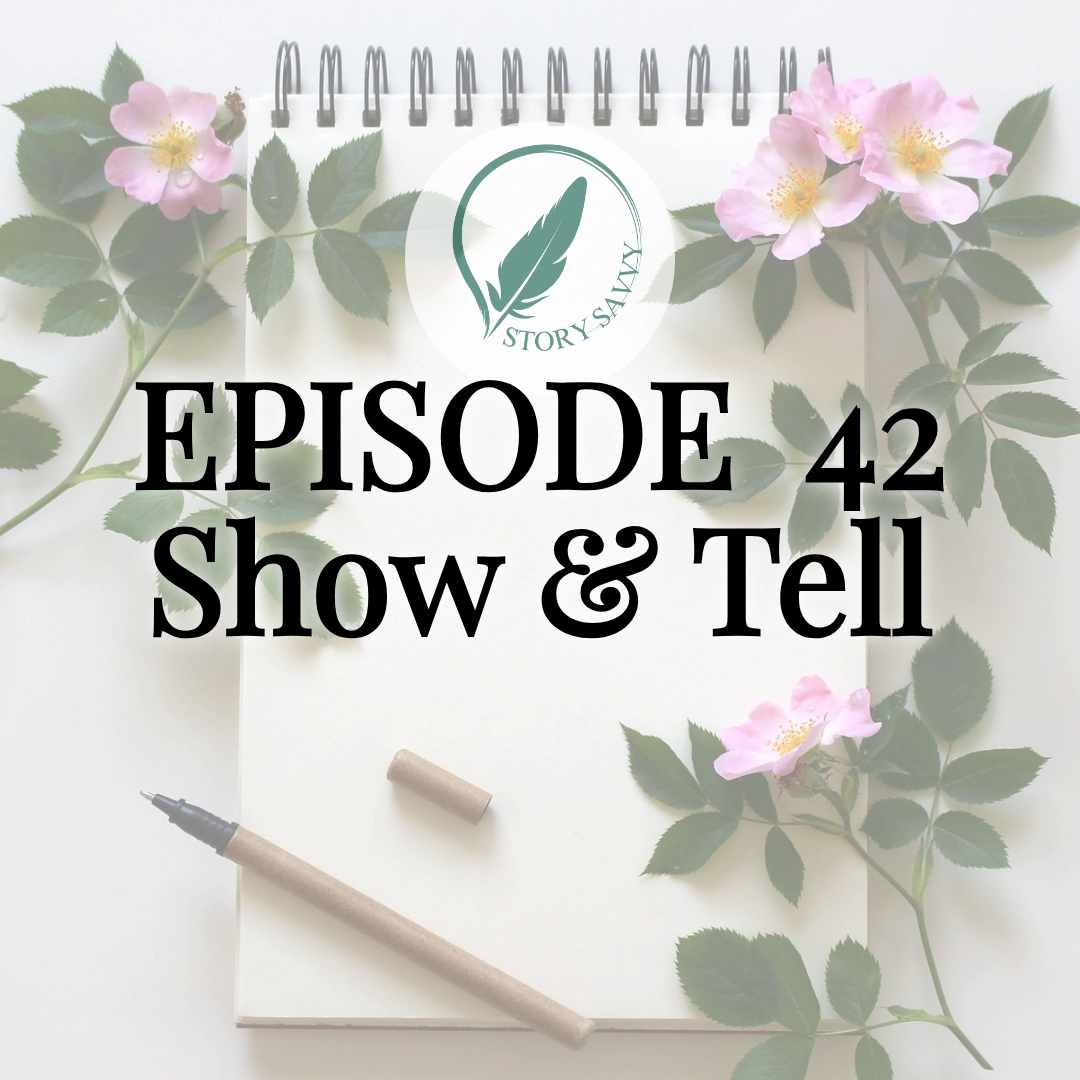Using Blurbs To Test Story Strength: Story Savvy Self-Editing Episode 14
Episode 14 Overview:
Using Blurbs To Test Story Strength
“How well do I think I matched my blurb?How can I draft (or re-draft) a blurb for what I WANT this story to be? What differences between the two do I think I want to change in the blurb, or in the manuscript? Would those changes IMPROVE my general impression of the global story?”
Want to know what makes a good writer great? Rebecca teaches you how to edit your book yourself, offering expert fantasy book blurb advice. Unlike most writing instructions, she dives into how your book blurb can actually strengthen your story during the self-editing process.
Today, in this newest episode of 52-Week Story Savvy, Rebecca Hartwell (hartboundediting.com) and aspiring author Agnes Wolfe (authorsalcove.com) discuss how writing your blurb early in the process can enhance your storytelling and support your revisions. Whether you're drafting your first chapter or polishing a complete manuscript, this episode will help you align your story’s core with the emotional promise you make in your blurb.
This episode covers everything from what a blurb really is (and isn’t), to how to draft one that clearly communicates your protagonist’s goals, the book’s tone, and the genre’s expectations. You’ll learn Rebecca’s five-step process for writing blurbs, how to use them to identify story weaknesses, and how to avoid common blurb mistakes. Plus, Rebecca offers real-world encouragement for authors who dread writing blurbs—recommending Brian Cohen’s How to Write a Sizzling Synopsis as a powerful resource.
In This Episode:
~Writing an effective blurb
~What is a blurb and what it is not
~A 5-step blurb-writing process to draft, revise, and polis
~How to use blurbs as a self-editing tool
~Common blurb mistakes to avoid, like info-dumping, naming too many characters, or mismatching tone and content.
Recommended Resources:
~Book: How to Write a Sizzling Synopsis by Brian Cohen
~Developmental Editing Services (Expert Feedback AND Blurb writing service based on reading the whole book) – [https://hartboundediting.com]
~Authors’ Alcove Membership Site – [http://authorsalcove.com]
~Book Giveaway – [http://authorsalcove.org]
See you next week for episode 15: Checking Your Narrative Style Choices
Blurb Creation, Help, or Reworking
$250
Per Story
Want to have a blurb written by an experienced professional who actually reads the full story to do so? I've got you! I am happy to create one from scratch or use a blurb you've already made as a starting point, and will consider elements such as genre/subgenres, tropes, target audience, current trends, overarching themes, and the strongest elements of YOUR story in crafting a short, punchy blurb sure to catch readers, including a tailor-made tagline, synopsis, and selling paragraph/call-to-action .
Also available as an add-on to a developmental edit or expert beta read for only $100.
Episode 14 Transcript:
Using Blurbs To Test Story Strength
Rebecca: Hello and welcome to the Hart Bound Editing Podcast. This is episode 14 of the weekly Story Savvy series where we tackle the 52 biggest self-editing topics and tips to help you make your good story great as an aspiring author asks me, a developmental editor, all of the questions that you've wanted to. We have covered so much in this series so far, including last week's episode on how to improve the overall global pacing of our stories.
Today we are going to take a look at how we can use blurbs to do a wellness check on the core elements of our stories. By the end of this episode, you'll hopefully feel confident drafting your first blurb if you haven't yet, or rewriting one that you already have, and using it as a measure of how closely the story you wrote matches the story that you wanted to write. Joining me to ask all of the questions is my friend and co-host Agnes Wolfe.
Agnes: Hi, I'm an aspiring fantasy author who hopes to release her first middle-grade fantasy later this year, and I'm also the host and founder of Authors Alcove. I'm here today to tackle the often-intimidating topic of blurbs and how they can be helpful long before you start trying to sell your book.
Alright, so I'm going to start off by saying that I have already written my blurb and one of the things that I noticed when I wrote my blurb, and this is before I'm starting to ask questions, was that I realized I wanted to change who my audience was.
So, like, something like even as simple as that because I had sent you a blurb but I recently was read readjusting it and I realized that my audience isn't necessarily exactly who I originally set out for it to be and it also is going to impact my story in a very impactful way. So anyways, I'm very excited about this particular episode. So, I think that from talking, I've interviewed so many people, talking to so many people, they have so much trouble with their blurb. How do you tell people what your book is about without telling them too much, which I think is what some people struggle with, while still keeping that interest?
Rebecca: So, I think I'm going to go over what a blurb is and isn't to answer this. A blurb is how you sell the best and most meaningful and most intriguing or rewarding aspects of your story to prospective readers in a few paragraphs. It is not a synopsis where you summarize the blow-by-blow plots of the story in a few pages.
Blurbs are about emotion, impact, and color. They are not about details, explaining anything—that's often an issue that I see, is people want to explain their world building or their magic system in the blurb—or listing more than the biggest and best necessary aspects.
For example, blurbs should use the most evocative and valenced language possible, but should not name more than three characters, absolute maximum, and only the first names of those characters in nearly all cases. For the purposes of these exercises that we're talking about in this episode, your blurbs really, really don't need to be perfect. Just having a best attempt is fine for now.
And when in doubt, go back to the list of similar books to your own in your genre that you hopefully kept from the early exercises in this series and use them as templates and inspiration for what a blurb is and should look like.
Agnes: So, I know myself, like I actually wrote my blurb before I even wrote the first chapter, and it has changed like a million times since then. And I've talked to a lot of authors, and it's funny because some authors are like, let's write it at the beginning so that way I know what the direction is, and that's actually what I did. And I did that without ever hearing anyone else do that. And then I hear other people who wait till the very last minute and they don't have a clue what they're going to do, but they wait till they're all done. So my question for you, as a development editor, is when do you feel someone should write their blurb? Yes, that’s the question.
Rebecca: So, I think you did it right. I personally recommend drafting just a rough, totally low-pressure blurb as soon as you can. I personally do it right before I start drafting, after I've done all of my plotting and outlining, just to check the viability of the story idea.
And I believe that this is applicable if you're a plotter or a pantser. Writing a blurb just before you start drafting can be really, really helpful in doing that sort of gut-check. However, this is a self-editing series, so it's also totally fine to draft one now, at this stage, for the first time, if you want to do these exercises. Or you can wait and only write a blurb for marketing like most authors do. That's fine.
Agnes: So, if most authors wait, then why are we covering this blurb this early in the process of the self-editing course?
Rebecca: It has layers. For the purposes of this episode, we want to use it as an exercise to check how well we achieved what we were going for with the story in a new way that might help us see it more objectively. To start thinking about how it will be viewed by people encountering this story idea for the first time, and if that vague first impression is strong enough. And, to check if we, basically we're using it to make sure that the crucial elements of our story—the emotions, characters, events—are all layered correctly for our genres.
Agnes: So, I know I'm a dork and I actually really enjoy writing blurbs, but I have interviewed so many authors and it's surprising how many hate it. Like they don't just dislike it, they hate it. And so, do you have any advice for those that just don't know what they're doing? They don't want to write it, but they know that it's an essential part of writing. What is your suggestion for how to do that? Are there any resources out there?
Rebecca: I'm like you, I love writing blurbs. I love writing my own blurbs, I love writing blurbs for other people, and I'm aware that we are the minority here. Most authors, yeah, hate it.
So, first of all, don't try to get it right the first time. Just take that pressure off yourself right now. Again, I highly recommend looking at other books in your subgenre, as niche as you can, for ideas and to get a sense of what you're going for.
I also highly recommend the book How to Write a Sizzling Synopsis by Bryan Cohen, which I will link in the description. The book is great; I've tried using their services and it was less great, but I do very much recommend the book. And he does free online trainings on writing blurbs sometimes, which are also fantastic.
But anyway, so here are my personal five-step recommendations for writing a good blurb.
Number one, to get started with writing a blurb, iteratively brainstorm a ton of possible first lines before picking a favorite. And we've talked about this in previous episodes. Just try to get 50 written down as quickly as you can, and if one sparks your inspiration, see if you can branch off of that until that creative juice runs out and go back to the list. Once you have a favorite, then you can start reworking that and really polishing it up. So, this first line, for what this needs to be, is it could be the what-if question for your book or the unique premise for your book, but it doesn't have to be. It just needs to be basically the movie poster line is, I think, the best description I've heard for it. If you were to have a movie poster in a movie theater that was your book, your story, what would the poster say? That's sort of your hook line, your introduction line.
A side note to this is that blurbs are usually written in third-person present tense, even if the book itself is written in some other narrative style. So, when you're writing your blurb, try to be in third-person present tense if you can.
Step two is just roughly draft one or two paragraphs about this list of things. So, I'm going to list things that would all be in these one or two paragraphs. So, number one, where your protagonist starts, where is their baseline beginning point? Two, what kicks off the story? Three, what is the biggest escalation, complication, or test in the first half? And that protagonist's biggest goal, pushing or pulling them through all of that? If you are writing dual POV romance particularly, this is often one paragraph for the FMC and one paragraph for the MMC, so female main character, main male character, covering at least one of those points for each of them, but ideally hitting all three of those vital elements in one paragraph for each of those.
So, the side note on this one is that the more you can let the potential reader relate to the protagonist just from reading the blurb, the better. If there is any relatable aspect to the character that you're really hoping will connect with those ideal readers within your genre, that is absolutely something that you should try to put into your blurb.
So, step three for this overall writing process is write a short paragraph after those one or two about the core conflict of the story, ending in the cliffhanger of your midpoint shift. And this is often phrased as a question. So, if your midpoint shift is, let's say, you know, it's romance and it's a breakup, the question that you're ending your blurb cliffhanger on might be something like, “will Jack and Jill reconcile their differences and find their happily ever after? Or will their stubbornness get in the way…” You don't want to give away anything in the second half of the story because then you've spoiled the book for people. But using that midpoint drop that you hopefully have is a great cliffhanger way to end the blurb and really get people pulled in.
So, step four is go through your blurb and tweak your wording to be more emotional, more concise, so, boiling things down as much as you can, more colorful and descriptive, and more valenced, so, more extremely positive or extremely negative in the word choices that you're using to describe things.
The last step, so step five for writing a blurb for beginners, is edit for length—which knowing most authors, you’ll probably have to edit down—to about 200 words. The precise number for blurbs varies a bit by who you ask or what platform you're writing it for, but 200 is a comfortable middle ground. But again, we're doing this as an exercise for ourselves at the moment, so the length doesn't matter too much, but I do encourage listeners and anyone doing this exercise to get it down to 200 words if you possibly can because a big point of this exercise is distilling the story down as condensedly as you possibly can.
Agnes: So, like I've already written mine, where does this exercise start if we have an old blurb from our planning or drafting stage where we just are using it for proof of concept or something like that?
Rebecca: If you have an old blurb for your book from back in that planning or drafting stage, check to see how closely the story you actually ended up putting on paper in full length form matches that blurb. If there's a discrepancy, look at where that is and what it is, or if you feel like you're stretching the truth to decide that they match, to tell yourself that they match, also look at that, and decide which side of that discrepancy you like more. Do you like the original idea that you had in that blurb or do you like what it actually ended up being more? And just look at that. See if you can tweak one to match the other, to match the one that you like more. And this is a very overwhelming piece of advice to give, so take that with a grain of salt and understand that this whole episode is basically trying to break that process down into more actionable steps.
Agnes: So that was actually something that I realized when I was readjusting my own blurb very recently is because when I decided to take stuff out, I decided to look at my blurb again. And I think that I actually, originally I wanted Amelia to be the protagonist, but I actually think I might have dual protagonists with Amelia and Julian being dual because I don't think my audience is necessarily just girls.
And also, I think about all my favorite books and a lot of them, like Fablehaven, has two primary protagonists and that's really going to shape what my book is. So, it is interesting that when I was working on my blurb, that was when I was like, you know what, I actually think that I'm going to change this in my book. So, it's interesting that we're talking about that here.
Anyway, so if I'm starting out on this exercise with writing a blurb for this book for the first time, pretending I'm starting it for the first time, should I be writing it exactly for the book as it is? Or for how I intended it to be after I'm done editing?
Rebecca: I recommend writing both and comparing them. So, the practice of writing multiple blurbs will be helpful in developing those skills. And the difference between those two blurbs, if you write both, will likely show you where you need to prioritize yourself in the self-editing.
So, if you're looking at the ideal and the reality and there's a difference between the two, then you know that you have room to bring that reality up to match the ideal. So, I very much recommend writing both. That's very much what this exercise is about.
Agnes: So, once we have our blurbs, what exactly are we doing with them at this stage? Because we're not using it to market yet.
Rebecca: Yep. All right, this is where we break down what this episode exercises are.
So, there are four different steps or exercises that you can do here, either with an old and updated blurb. So, you know, do more than one blurb. Or with two brand new ones like we were just talking about—one of the reality and one of the ideal.
So, exercise number one is: decide if you like the old blurb or what you thought the book was going to be more or less than the very honest assessment of the book. Did you achieve what you wanted to with the story? Did it end up being the genre, tone, and payoff you were inspired to write in the first place? If you feel like you didn't quite get the story to be what you'd wanted it to be, then proceed with this episode and I will take you through how to tackle that.
If you like the new or more honest version most, then you can do the rest of these exercises by all means but mostly focus on letting those improvements shine through in an updated blurb that matches the reality that you like more.
Exercise two is: ask yourself what differences between the ideal and the reality do I think I want to change in the blurb so that it matches the reality better? Or do I want to change in the manuscript so that it matches the ideal blurb more? Then ask yourself would those changes improve my general impression of the global story? Do I think that it would improve my potential readers' first impressions of my story, especially within my genre? And then, having decided those things, sit down with a notebook, brainstorm, and plan out how you could tweak things as needed until you feel satisfied with the answers.
Step three, or third exercise here, is: try to read the blurb as a stranger would, as objectively as you possibly can. Or ask a friend or fellow author to read it and tell you in as much detail as they can what they think the book will contain in regard to the plot, protagonist, general tone or vibe, and the emotions or topics it's going to explore based on the impression they got from the blurb that you've written. You're basically checking if the blurb is, you know, promising something that isn't actually really being delivered.
You're checking to see if you're going to disappoint readers by promising something that doesn't get delivered. You're checking to see if it is giving any wrong impressions that just don't fit the reality of the story. You're checking if there are any core aspects of the story you think would really hook readers which are missing from the blurb, which people aren't picking up on from the blurb.
So going through this exercise, jot down any realizations that you have around that reader perspective, trying to step out of your author perspective or editor perspective for a second, and consider if you need or want to tweak either the blurb to better represent what is there, or again, tweak what is in the story so that these promises in the blurb are being fulfilled.
Exercise number four is: you can use the blurb to check how well some of your major aspects or moments are working. As you are crafting or reworking the blurb, especially with Bryan Cohen's excellent advice in that How to Write a Sizzling Synopsis book, make sure that there really are emotions and stakes in everything. What is at stake? Can you describe your protagonist's goals in a sentence, in blurb form? If not, you may need to simplify, or clarify, or strengthen them in the story. Is the time, place, and fantasy or reality balance of your world-building clear in blurb-length brevity? If not, you may need to revisit your world building to make it more comprehensible or immersive. Are there nice big—relative to your genre, big is interpretable—values or valuables at stake in the story as a whole and in the major moments that you mention in the blurb? If not to any of this, you might need to go back into the manuscript and up the ante or clarify things, bring things more to the surface.
Another question you can ask when you're doing this exercise is are the genre-appropriate, intriguing emotions that you're promising through your genre choice woven through all of that? If not, you may need to revisit your protagonist’s character arc and make sure that they really are deeply invested in the outcome of their own story.
Basically, use the blurb as a lab test to make sure that when you distill all of the most important aspects of your story into a few hundred words, all of the ingredients are still mixing together really well and seem appealing. If they don't, it should help you see where you need to go in and make those edits. And from all of the notes that you have from this exercise, you then take those notes, and you go into the manuscript, and you start making those actual edits wherever you feel that they are needed.
Agnes: Thank you so much. I really appreciated all of that. But, you know, I know that we are in the minority that we love writing the blurbs.
Do people who are not huge fans of writing blurbs, do they really have to do this at this part of the self-editing process?
Rebecca: No, it's optional. It's just an option that makes sense to explore at this stage if you're going to at all.
Agnes: Alright. Well, I know I have read many blurbs, especially of self-published authors, which I think is where I'm leading right here, who I feel do not get the essence of their story in their blurb.
So, what are the key elements of a blurb that we should have so, you know, mine truly gets the essence of my story?
Rebecca: First of all, it's helpful to look at this as potential ingredients rather than a strict recipe that must be followed.
But some of those aspects that I can recommend right off the top of my head are: name your protagonist, but just by their first name. Mention their role in life or their general starting point—if you're writing romance, mention if the MMC is a cowboy. That's relevant. If you're writing fantasy, mention if your main character is a warrior or a magician or something like that. Third point would be, mention the core value at stake in the story.
So that might be justice, or freedom, or love, or life and death, enlightenment, or a fate worse than death in horror. Each genre has an emotional promise or a stakes promise and mentioning that in your blurb is potentially helpful.
If there is any fantasy or magic in the story, that should be mentioned. It is amazing how many blurbs I have seen for indie fantasy that don't mention that it's not set in reality. And it's just, it's a big missed opportunity. You need to signal, “hey, people who are looking for magic stories, you're looking for this book.”
You can mention where the story is taking place if that's central to the story being told, but this mostly applies to books set in the real world to some degree. If you have invented your own kingdoms in fantasy, probably don't mention them in the blurb.
Definitely, absolutely for all genres, mention one to three or so of your major tropes or subgenre markers. So, in your specific case for your book that I read and edited, that's probably the age of your protagonist. So, you know, so the potential readers know roughly what age of reader this is geared towards. Mention that it has dragons—that's a major selling point of your books. And maybe also mention ancient secrets or the prophecy or something with that sort of magical intrigue to it. Very importantly, mention the protagonist's core goal—which I touched on earlier, but it is so important I'm going to mention it again—or at least what that goal is in the first half. Again, if that changes through their dark night and they have a different goal going into the climax, you don't have to mention that in the blurb, but you need to have some goal or motive mentioned in the blurb so that the reader understands that there will be momentum of some sort.
Another thing to mention is the force of antagonism. So, whatever the tension or conflict or hurdles are that are coming at the reader and making things interesting in the story, mention those. You can name your villain for this if you have a classic villain, if that feels appropriate, but you can also be vague. So, write something like, you know, “Julian does something or something as he fights against the ancient powers determined to corrupt his best friend's bond with her dragon,” something like that.
You don't have to name the villain to name things like “tries to corrupt or,” you know, “the evil king holding them captive,” things like that.
So lastly on this “brief” list, and this is something that I suggest only worrying about when editing the blurb, so after drafting it, make sure that you are accurately presenting the emotions and tone of the book. And this is a little repetitive on other stuff that I've said, but it bears repeating here. This is probably the single most common mistake I see in blurbs. Where the author seems to have gotten caught up in making the blurb sound extra dramatic or extra funny or extra serious or romantic and swooning, and then the book ended up, in reality, being a very watered-down version of that emotion or an emotion that's not quite exactly what was promised. It's, you know, one degree to the right kind of thing. Which is very disappointing for your reader, because if the blurb is promising the most dramatic drama ever, and you get it's kind of dramatic, that's not great. So, try to get your blurb to accurately portray what emotion the book is promising and to what degree. Very, very important. Good first correct impressions are vital right off the bat.
Agnes: So, some thoughts that I've been having while you were talking is that, for one, this ties back to audience, because like you said, you know, you have to have it match both your book, the tone needs to match the book and the blurb, but then it also goes right back to audience.
And one thing that I notice as somebody, so like, you know, when I first started off podcasting and was interviewing authors, I accepted a lot of authors, and now I'm a little bit more choosy because I have 100 to choose from, only have 52 slots to fill, you know, and then I take some weeks off, so I don't even fill 52, so I have to turn people down sometimes. So one of the things that I do now, as I'm like eliminating, the first thing I do is I look at the genre, see if the genres fit for my audience, for my podcast, and then you got to think about, okay, this is also your reading audience, you know, like we're looking at the same sort of thing. And then I look at the blurb. And so, then I have contacted several authors after reading the blurb, being like, I'm not sure yours is a good fit because, you know, this is what we're looking for, fantasy and whatever. And then they come back and say, "But it is fantasy." But their blurb did not portray it. And so, I do find it interesting because you said if there is magic, then you need to have that. And how many authors, especially self-published authors, tend to miss that particular thing?
Rebecca: Yeah, if there is romance, or if there's, you know, global nuclear stakes, whatever it is that that is a major aspect of the book, you need to mention that in the blurb!
Agnes: Yeah, and because otherwise you're going to miss, like, that's mainly what I read too. And I do read a lot of the books of authors that have sent me their things, and I even read some of them that I don't even accept on my show, but I only read it if I like the blurb, if the blurb sounds like me, that I am your audience.
Anyway, I know we need to wrap up. But I do want to ask one last question: What if we end up feeling overwhelmed by how different the reality of our book is from the ideal and our blurb when we get to the ending stages?
Rebecca: Yeah. So again, this is an optional exercise step. All of these steps are technically optional. But for this one, if you're feeling overwhelmed, try rewording the blurb to bring it more in line with the reality of the story without making the blurb worse. It's a lot easier to rework 200 words than it is to rework 100,000.
So, if you're really feeling overwhelmed by the difference, see if you can make the blurb match more accurately without making it sound lamer. And that will immediately take things off your plate. If you're worried that your emotions aren't there yet, maybe you're just naming the wrong emotion in the blurb. So, tweaking that can immediately take a lot of that load off.
Also, and as always, set things aside for a little while and see if things settle into place in your mind on a random Tuesday while you're taking a shower. If they don't, and again, as always, you can always decide that if something is worth doing, then it's worth doing, but sometimes it just isn't. Sometimes it's just not worth overwhelming yourself and putting off being done even longer in the self-editing stage. If you or any of our listeners are feeling overwhelmed, then just see what thoughts you have about this topic, this exercise, over the next week before we release the next episode, and then, you know, set anything that you're stuck on aside until, you know, until something comes up, if it ever does, and just move on to the next step, move on to the next topic. You'll be amazed, if you're anything like me, what your subconscious will do over time if you just set it aside and let it simmer on a back burner, so to speak. Epiphanies can come out of anywhere. And if you're feeling overwhelmed, then it's totally fine to set things aside and see if any epiphanies come up. And if not, maybe this isn't the exercise that's vital to you.
Agnes: Thank you so much for all that you shared about writing blurbs and stuff. I really appreciate it. I definitely am going to have to re-listen to this one, because I will have to compare, okay, what did I write? Did it sound like what she wants us to write? Or what you shared?
And what was the resource that you had suggested?
Rebecca: The book is called How to Write a Sizzling Synopsis by Bryan, spelled with a Y, Cohen, C-O-H-E-N. And I will link that in the episode description.
Agnes: And so will I. Thank you very much.
Rebecca: Absolutely.
Next week, we will move away from blurbs, never fear. And we will go over the sort of the last topic for the biggest layer of this self-editing series —where we're looking at global stuff —by checking our narrative style choices, like person, tense, and POV.
For now, I really want to thank everyone following along with this series. We would really appreciate it if you could help us out by liking and subscribing to the Hart Bound Editing Podcast and the Authors' Alcove Podcast, where you can find lots more content for fantasy authors and readers beyond this joint series. And, if you haven't already, I encourage you to check out the Authors' Alcove community on Patreon or their new membership site at authorsalcove.com.
Agnes: And if you're looking for a development editor, we've got one really good one here, Hart Bound Editing. Definitely check her out.
And also, I'm really excited about next week. Hopefully it doesn't go too long, because I have a lot of questions for you that I'm very excited to ask, because, you know, point of view is one of the things that I struggled with. And I know that's one of the topics we're talking about, so.
Rebecca: Looking forward to it.
Thank you so much for listening to the Hart Bound Editing Podcast. I look forward to bringing you more content to help you make your good story great so it can change lives and change your world.
Follow along to hear more, or visit my website linked in the description to learn how I can help you and your story to flourish. See you next time.
